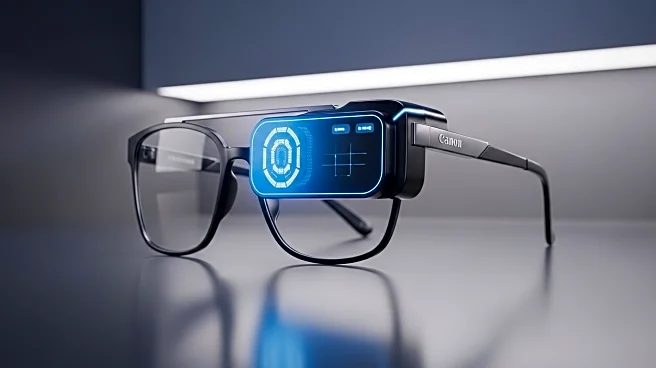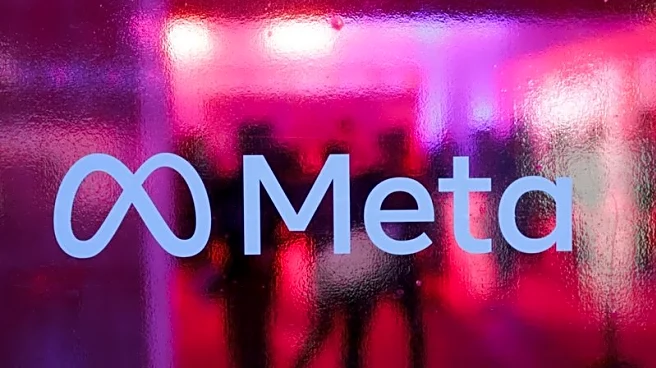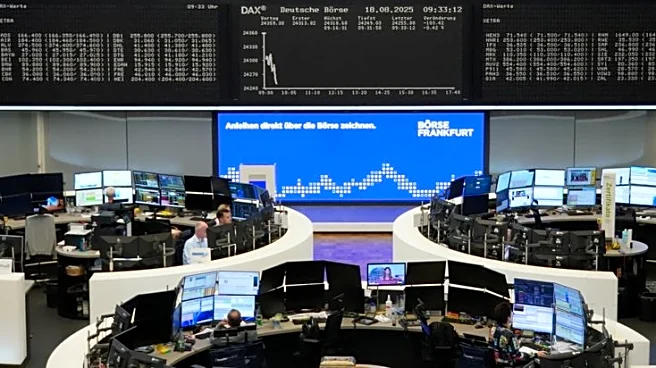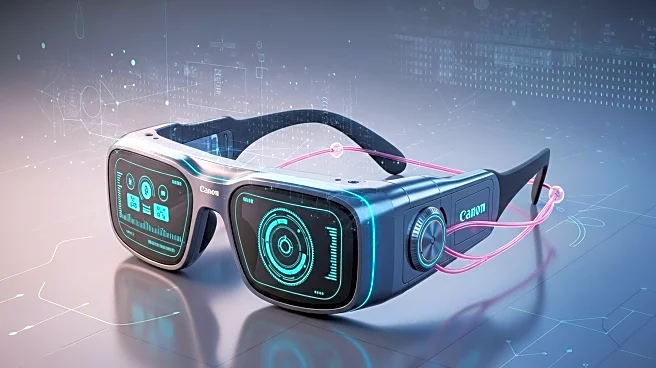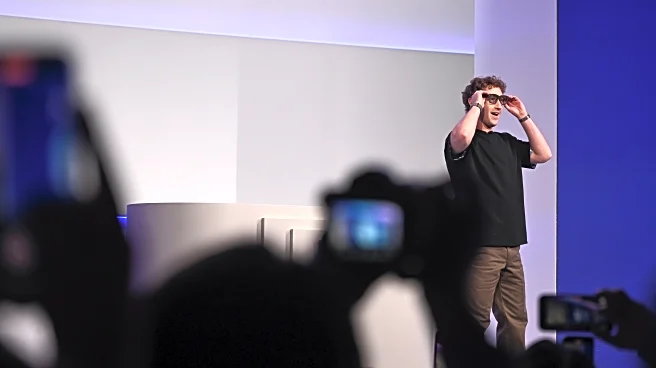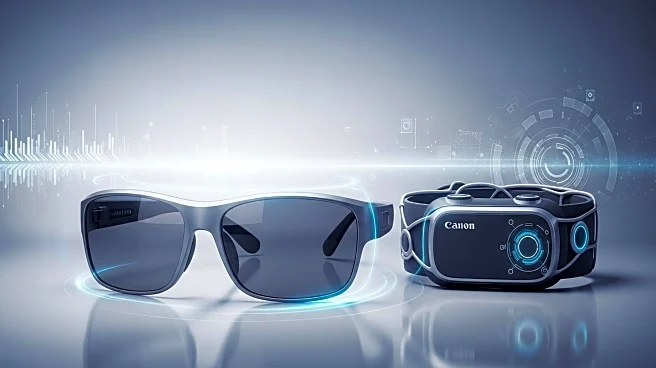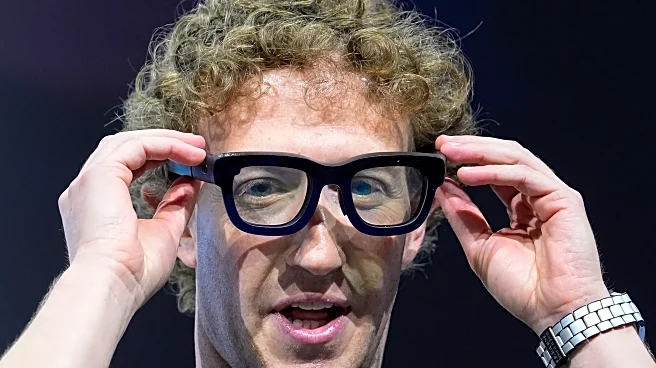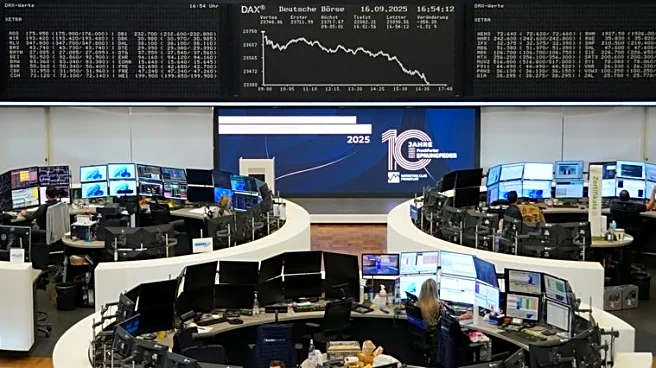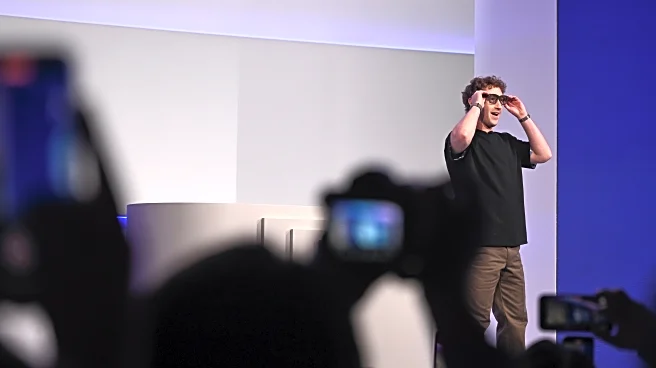What is the story about?
What's Happening?
At the Meta Connect developer conference, Mark Zuckerberg introduced the $799 Meta Ray-Ban Display glasses, marking the company's first consumer-ready smart glasses with a built-in display. These glasses feature a small digital display controlled via hand gestures through a neural technology-powered wristband. The glasses are part of Meta's ongoing efforts to integrate augmented reality into everyday life, bridging the gap between audio-only Ray-Ban Meta smart glasses and the experimental Orion augmented reality glasses. The Meta Ray-Ban Display glasses, developed in partnership with EssilorLuxottica, will be available for purchase in the U.S. starting September 30. Additionally, Meta introduced the Oakley Meta Vanguard smart glasses for athletes, priced at $499, and the Ray-Ban Meta (Gen 2) glasses, priced at $379.
Why It's Important?
The introduction of the Meta Ray-Ban Display glasses signifies a significant step in the evolution of wearable technology, potentially impacting the consumer electronics market by offering a new way to interact with digital content. This development could influence the competitive landscape of smart glasses, challenging other tech companies to innovate. The glasses' ability to integrate with existing Meta products and services, such as the Quest VR headsets, could enhance user engagement and expand Meta's ecosystem. The collaboration with EssilorLuxottica highlights the importance of partnerships in advancing technology and design in the wearable tech industry.
What's Next?
As the Meta Ray-Ban Display glasses hit the market, consumer reception and feedback will be crucial in determining their success. Meta may face challenges related to privacy concerns and the practical utility of the glasses in everyday scenarios. The company will likely continue to refine its augmented reality offerings, potentially leading to further advancements in smart glasses technology. Additionally, Meta's competitors may respond with their own innovations, intensifying the race to dominate the wearable tech market.
AI Generated Content
Do you find this article useful?
